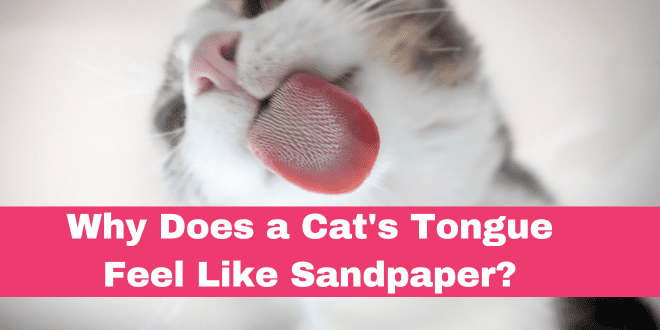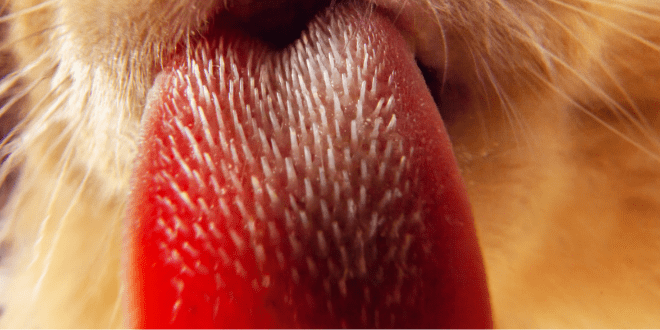
At some point you’ve probably experienced being licked by a cat. If you’re a cat lover, it most likely happens daily. You’ve also probably noticed that the cat’s tongue is rough, with a texture like sandpaper. The cat’s tongue is beautifully designed to aid in hunting and various aspects of survival.
The Design
The cat’s tongue is covered in backward-facing little spines, known as papillae, made from a protein called keratin. Keratin is the same substance that forms their claws, as well as our own nails. These barbs, once thought to be solid, are hollow and scoop shaped.
The spines in the middle of the tongue are longer than the ones out toward the edges, but they are all strong and firm. The papillae serve crucial functions related to nutrition and grooming.

Photo by David Bedescu
Mealtime Assistance
Cats are obligate carnivores and must get their protein from animal sources. The papillae on the tongue help cats efficiently consume a maximum amount of flesh from their prey by rasping meat from the bones.
Grooming Aid
Cats have a well-earned reputation of being fastidious groomers and the barbs on the tongue make a very efficient grooming brush. As cats lick their fur, the papillae grab loose, dead hair, dirt, and debris, and help work out tangles in the haircoat.
The barbs also aid in distribution of saliva to help cool the cat, clean the haircoat, and remove scent traces of any recent meal. This scent removal is critical to avoid alerting potential prey as well as larger predators, as cats are both predators and prey themselves.
A Mother’s Touch
For kittens, the roughness of the mother’s tongue is very critical for survival. Newborn kittens are unable to eliminate waste on their own, so the mother uses her tongue to stimulate urination and defecation.
There is a downside Though
Because of the way the tiny spines on the tongue slant toward the throat, it makes it difficult for cats to spit out hair collected through grooming. The hair ends up getting swallowed and that can lead to hairballs.
The spines also make it difficult for cats to spit out any dangerous objects such as string, rubber bands, or yarn. A cat is naturally drawn to these types of objects for playing, but if they end up on the tongue, the Velco-like, backward-facing barbs will send them back toward the throat to be swallowed. This can lead to choking, among other internal dangers.
It’s essential to be cautious about leaving objects around that a cat might view as playtime opportunities, as they could end up swallowing something dangerous because they can’t dislodge it from their tongue. You frequently see images of kittens and cats playing with yarn, but that’s a very dangerous scenario. If you use any type of stringed toy with a cat, it should only be used during interactive playtime, with a watchful eye to be certain the cat doesn’t chew pieces of string. When interactive playtime is over, all stringed toys should be put away, out of the cat’s reach. Only leave out toys that are safe for solo playtime.
When Your Cat Licks You
It may feel funny to experience that rough tongue texture, especially if you’ve only been used to being licked by dogs. When a cat licks you with that sandpaper tongue, it’s usually a display of bonding and affection.
Need More Information?
For more insights on cat behavior and training, check out the best-selling books by Pam Johnson-Bennett. The books are available at bookstores as well as online. We have included Amazon links here on our website.

